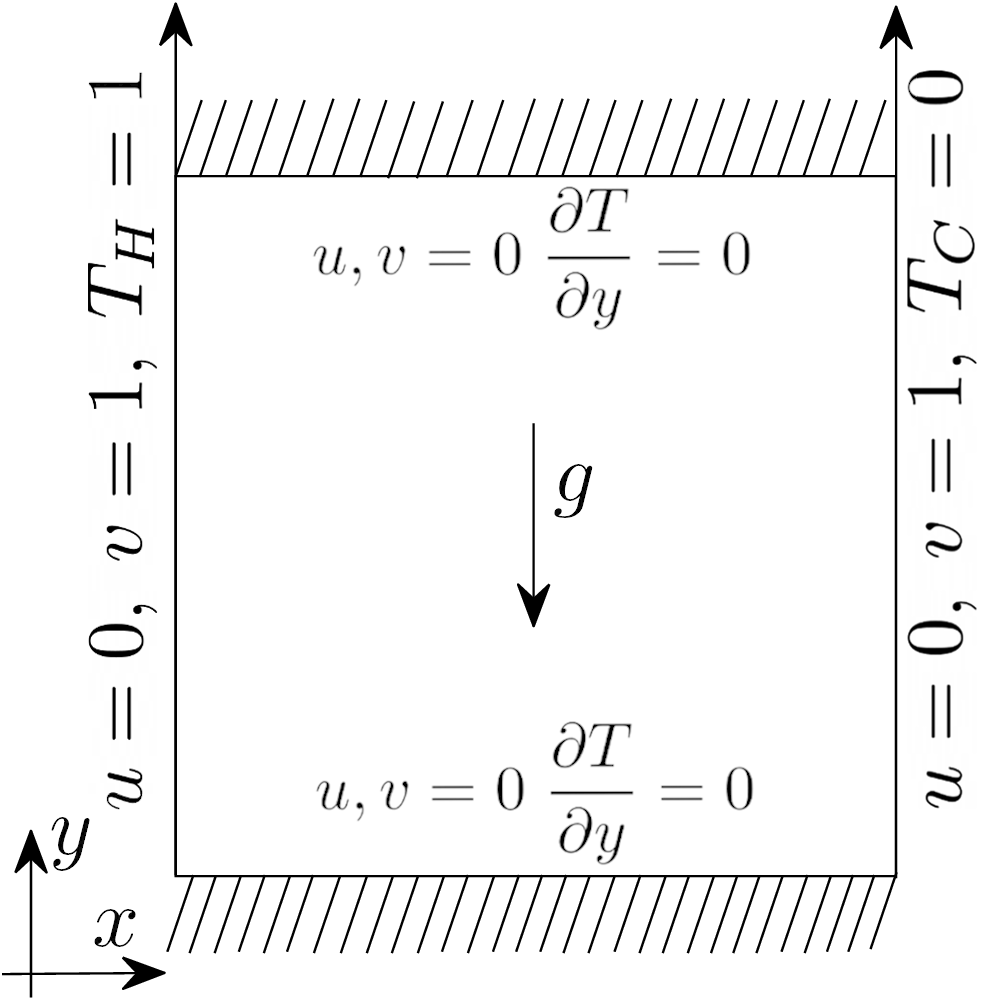Steady Buoyant Navier-Stokes for Differentially Heated Cavity
Aim of this tutorial: learn how the indirect reconstruction algorithm (two step approach) works, combining the methods discussed in the previous tutorial. This tutorial is of particular interest for multi-physics problems with partial observations: it is legitimate to investigate the possibility that a field carries information about another field: for instance, the temperature and the velocity in a buoyancy-driven problem. Moreover, this tutorial will show how to import snapshots from OpenFOAM simulations exploiting the fluidfoam module.
This two step method is based on the following steps Introini et al. (2023): at first, the characteristic parameter is estimation by solving an optimisation problem whose input are the measures of the observable field; then, the reconstruction of the unobservable field is performed by using POD with Interpolation.
The Differentially Heated Cavity is taken from the ROSE-ROM4FOAM tutorial. It’s 2D Cavity with velocity imposed at the left and right boundary, along with [Sah18].

The governing equations are the Navier-Stokes with energy equation under the Boussinesq approximation
given \(\Omega\) as the domain.